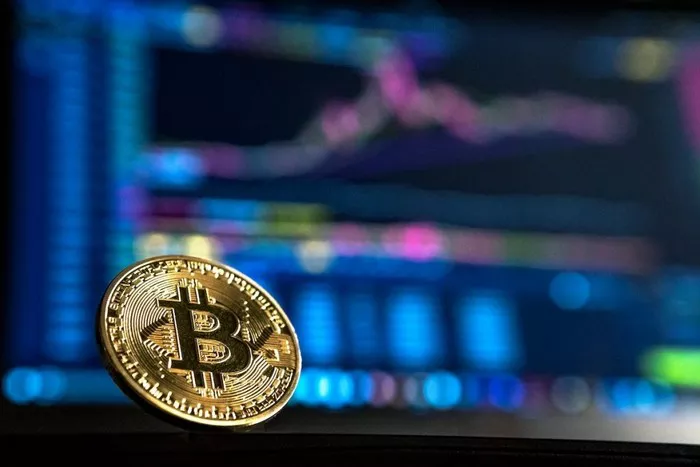Cryptocurrency exchanges are platforms that allow individuals to buy, sell, and trade digital assets like Bitcoin, Ethereum, and other cryptocurrencies. They have become crucial in the global financial ecosystem, facilitating transactions worth billions of dollars every day. As cryptocurrencies have evolved, so have exchanges, but many wonder which cryptocurrency exchange was the first and what its role has been in shaping the market. In this article, we’ll explore the oldest cryptocurrency exchange, its history, impact on the market, and its current standing.
What Is a Cryptocurrency Exchange?
Overview of Cryptocurrency Exchanges
A cryptocurrency exchange is a platform where traders can buy, sell, and exchange digital currencies. Exchanges offer various services, including:
Trading Cryptocurrencies: Users can buy or sell cryptocurrencies, either through fiat currencies (like USD, EUR) or by trading one cryptocurrency for another.
Storage Services: Many exchanges offer wallets where users can store their digital assets securely.
Advanced Trading Features: Some platforms offer margin trading, futures contracts, and staking options.
Decentralized vs. Centralized: There are centralized exchanges (CEX) that are run by companies with a central authority, and decentralized exchanges (DEX) that operate without a central controlling entity, relying on blockchain protocols.
Importance of Cryptocurrency Exchanges
Exchanges play an essential role in the cryptocurrency market for several reasons:
Liquidity: They ensure liquidity, enabling buyers and sellers to easily transact at fair market prices.
Price Discovery: Exchanges help establish the market value of cryptocurrencies based on supply and demand.
Accessibility: Exchanges provide access to a wide range of cryptocurrencies for both retail and institutional investors.
Security: Reputable exchanges offer security features like two-factor authentication, cold storage for assets, and insurance against hacks.
The Oldest Cryptocurrency Exchange: Mt. Gox
Origins of Mt. Gox
The oldest cryptocurrency exchange is Mt. Gox. It was founded by Jed McCaleb in 2010, just a year after Bitcoin’s inception. Initially, the website was used to trade cards from the popular game “Magic: The Gathering.” The name Mt. Gox stands for “Magic: The Gathering Online Exchange.” McCaleb, who later became one of the founders of Ripple and Stellar, saw an opportunity in the growing Bitcoin community and decided to pivot Mt. Gox into a Bitcoin trading platform.
Early Role in the Bitcoin Market
Mt. Gox quickly became the go-to exchange for Bitcoin trading. It played a pivotal role in making Bitcoin accessible to the public by providing a simple platform for users to buy and sell the digital currency.
First Major Exchange: Mt. Gox became the first major cryptocurrency exchange, dominating the market. At its peak, it handled around 70% of all Bitcoin transactions worldwide.
Bitcoin Adoption: As Bitcoin gained popularity in its early days, Mt. Gox was instrumental in facilitating its adoption by offering an easy-to-use platform for both novice and experienced traders.
Pioneering Role: Mt. Gox set the stage for future exchanges by establishing many of the basic operational standards, including wallet management, trading pairs, and security protocols.
Key Milestones in Mt. Gox’s History
2010: Mt. Gox is founded by Jed McCaleb and soon becomes the largest Bitcoin exchange in the world.
2011: McCaleb sells Mt. Gox to Mark Karpelès, a French developer and entrepreneur. Under Karpelès’ management, the platform continues to grow rapidly.
2013: Mt. Gox experiences growing pains, including security breaches and slow transaction times due to the increasing popularity of Bitcoin.
2014: Mt. Gox collapses following one of the largest hacks in the history of cryptocurrency, leading to the loss of 850,000 Bitcoins (worth $450 million at the time).
The Collapse of Mt. Gox
The 2014 Hack
In early 2014, Mt. Gox shocked the world by filing for bankruptcy and announcing the loss of 850,000 Bitcoins. The company claimed that hackers had exploited vulnerabilities in its system for years, draining its reserves. This event marked one of the most significant crises in cryptocurrency history and is still referenced as a cautionary tale about the importance of exchange security.
Impact on the Cryptocurrency Market
The collapse of Mt. Gox had widespread implications:
Bitcoin Price Crash: At the time, Mt. Gox handled the majority of Bitcoin trades, and its collapse led to a sharp drop in Bitcoin’s price. The event created panic among traders and cast doubt on the future of cryptocurrencies.
Trust and Security Concerns: Mt. Gox’s downfall raised questions about the security of cryptocurrency exchanges. The hack underscored the importance of using exchanges with robust security features, including cold storage and regular audits.
Regulatory Scrutiny: The collapse of Mt. Gox attracted the attention of regulators worldwide, leading to the introduction of stricter regulations on cryptocurrency exchanges. Governments began to require better transparency, anti-money laundering (AML) measures, and customer identification protocols (KYC).
Legal Fallout
Following the collapse, Mt. Gox went into bankruptcy proceedings. Efforts were made to recover the lost Bitcoins, and some were eventually found. As of 2021, the recovery process was still ongoing, with creditors hoping to recover a portion of their lost funds. Mark Karpelès, the CEO of Mt. Gox, faced legal battles, and in 2019, he was found guilty of falsifying data but was acquitted of embezzlement charges.
The Legacy of Mt. Gox
Lessons Learned
Mt. Gox’s collapse taught the cryptocurrency industry several important lessons:
Security Is Paramount: Exchanges must invest in robust security measures to protect user funds from hackers. Cold storage, multisignature wallets, and regular security audits are now standard practices for reputable exchanges.
Transparency and Regulation: The lack of oversight at Mt. Gox contributed to its downfall. Today, most exchanges operate with far greater transparency and comply with regulatory frameworks.
User Vigilance: Traders and investors learned the importance of not keeping all of their funds on exchanges. Many now use hardware wallets or other secure methods for storing large amounts of cryptocurrency.
The Rise of New Exchanges
While Mt. Gox is the oldest cryptocurrency exchange, its collapse paved the way for the rise of new, more secure platforms. Some of the most prominent exchanges today include:
Binance: Launched in 2017, Binance is one of the largest cryptocurrency exchanges by trading volume. It offers a wide range of cryptocurrencies and trading pairs.
Coinbase: Founded in 2012, Coinbase has become one of the most popular exchanges, especially for U.S. users. It is known for its user-friendly interface and regulatory compliance.
Kraken: Kraken, founded in 2011, is another early exchange that has grown in popularity. It offers advanced trading features and a wide range of cryptocurrencies.
The Evolution of Cryptocurrency Exchanges
Since the days of Mt. Gox, cryptocurrency exchanges have evolved significantly. Today, exchanges offer a range of services, including staking, margin trading, decentralized finance (DeFi) products, and much more. The focus has shifted from basic trading platforms to comprehensive financial ecosystems.
Security Focus: Most modern exchanges prioritize security, implementing advanced features like two-factor authentication (2FA), insurance for user funds, and cold storage solutions to protect against hacks.
Regulatory Compliance: Following Mt. Gox’s collapse, exchanges have become more compliant with international regulations. Know-your-customer (KYC) and anti-money laundering (AML) protocols are now standard on most reputable exchanges.
User Experience: The early exchanges like Mt. Gox were often difficult to navigate, but today’s exchanges focus on providing user-friendly interfaces that cater to both beginners and advanced traders.
Decentralization: Decentralized exchanges (DEXs) have gained popularity as they offer peer-to-peer trading without a central authority, reducing the risks associated with centralized platforms.
See Also: When Is the Last Bitcoin Halving?
Current Status of Mt. Gox
Recovery Efforts
Although Mt. Gox ceased operations in 2014, efforts to recover the lost Bitcoin have continued. In recent years, there have been some positive developments, with a portion of the missing Bitcoin recovered and plans to compensate affected users. However, the process has been slow, and many creditors are still waiting for resolution.
Karpelès’ Role and Legal Status
Mark Karpelès, the CEO of Mt. Gox, faced multiple charges in Japan, where the exchange was based. He was convicted of falsifying data but avoided a more severe embezzlement charge. Karpelès has maintained that he was not involved in the hack and that he did everything possible to protect the exchange’s users.
Conclusion
Mt. Gox, the oldest cryptocurrency exchange, played a pivotal role in shaping the early Bitcoin market. Its rise and eventual collapse left a lasting mark on the cryptocurrency world, highlighting the importance of security, regulation, and transparency in exchanges.
While Mt. Gox’s downfall was a significant setback for the industry, it also spurred the development of more secure, robust exchanges. Today, cryptocurrency exchanges have evolved into highly secure platforms with a wide range of services, providing users with greater confidence in the digital asset space.
As the market continues to grow, the legacy of Mt. Gox serves as a reminder of the risks and challenges that come with innovation in the financial world. Investors and traders must remain vigilant, prioritize security, and choose reputable exchanges to safeguard their assets.
Related topics:




























